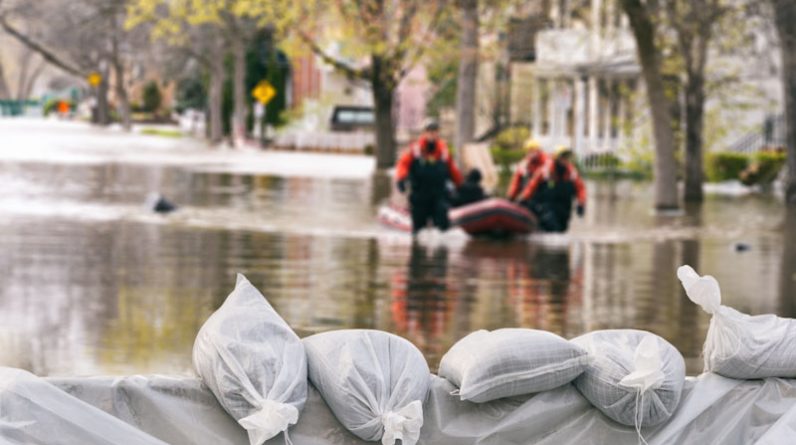Law enforcement officers and emergency service providers are intimately familiar with the enigmatic force known as adrenaline. It floods their lives to a significant degree on a daily basis. While adrenaline is not exclusive to these professions, its effects on the human body are worth exploring by the survivalist. But first, let’s delve into its purpose and origin.
Adrenaline, scientifically referred to as epinephrine, is a hormone and neurotransmitter produced by our adrenal glands situated atop our kidneys. It acts as a messenger, transmitting signals throughout our body to prepare us for the unexpected, exhilarating, and challenging moments that life throws at us.
Adrenaline, an intrinsic component of our physiology, serves as a natural safeguard. It emerges during critical moments, enabling us to achieve peak performance and ensuring our triumph in combat or defense against imminent threats.
Some argue that in the modern era, the necessity for adrenaline has diminished compared to our primal ancestors, yet this belief fails to hold true. Even the act of preparing for work engenders a mild rush for many individuals when they have to face a challenging situation that day.
Though many individuals lead relatively calmer lives today in comparison to the past, life can still deliver unexpected blows. Car accidents and assaults are just a few instances where adrenaline proves invaluable in aiding us. Throughout my lifetime, as I encountered various emergency situations, I personally underwent the full spectrum of adrenaline’s effects that we will now examine.
How adrenaline affects us:
Selective auditory filtering
Our mind employs a mechanism known as selective auditory filtering, leading to auditory exclusion. It dismisses what it deems as extraneous information, unnecessary for our immediate survival. Consequently, we often remain unaware of the sounds surrounding us. Even loud and jarring noises like gunshots, explosions, or shouted commands may be disregarded or muffled as if originating from a distant realm. However, in emergency situations, this poses a significant challenge as crucial information, such as urgent orders or radio calls, can easily go unnoticed.
Time perception distortion
This phenomenon is known as tachypsychia, and when you’re under the influence of this neurological condition, your perception of time undergoes a remarkable transformation. Events appear to unfold in slow motion, similar to a surreal dream state like the bullet time effect you’ve seen in movies.
The mind races frantically, compressing an overwhelming influx of thoughts into a fleeting moment. Similar effects can be induced artificially through certain drugs. Adrenaline, being a natural body-produced substance, alters our cognition and senses when it courses through our veins.
Visual alterations
Adrenaline triggers the dilation of our pupils, allowing more light to enter than usual, which proves advantageous during emergencies, especially during nighttime. However, this can prove to be a two-edged sword, and numerous individuals report difficulties in sighting their targets during gunfights when visual alteration occurs as a consequence of an adrenaline rush.
Tunnel vision
During intense moments, our attention fixates on what it perceives as the immediate threat, inadvertently excluding peripheral stimuli deemed irrelevant at the time. Our vision narrows, resembling a gaze down a tunnel, blocking out the periphery. Regrettably, this presents a genuine concern as potential threats approaching from our sides or rear may go unnoticed.
Although we strive to overcome this limitation through training, replicating the precise effects of adrenaline in a controlled environment proves challenging. Furthermore, as adrenaline alters our cognitive processes, accessing our training during such heightened states becomes exceedingly difficult—a true Catch-22 scenario.
For those unfamiliar with the term, a Catch-22 scenario refers to a situation in which one is trapped in a paradoxical or self-contradictory predicament with no apparent escape or resolution. It originates from Joseph Heller’s novel “Catch-22,” in which a fictional military regulation states that a pilot’s request to be declared insane and relieved from dangerous flying missions can only be granted if the pilot is deemed mentally stable enough to make such a request. Essentially, it presents a no-win situation where fulfilling one condition becomes impossible due to conflicting requirements.
In broader terms, a Catch-22 scenario describes a deadlock or dilemma in which the conditions for a desired outcome are inherently contradictory, making it impossible to satisfy the necessary criteria. It often implies a frustrating and circular logic that prevents progress or decision-making.
Pain diminishment
As a crucial aspect of our body’s self-defense mechanism, adrenaline often dampens our perception of pain. Through countless conversations with survivors of various incidents involving wounds, particularly from bullets or bladed weapons, a consistent pattern emerges. A significant portion of these individuals remained unaware of being shot, stabbed, or injured at the time of the incident, with many sustaining severe harm.
It is not uncommon for individuals to experience a delayed onset of pain, ranging from several minutes to even hours after discovering their wounds. While there are exceptions, various surveys suggest that those who immediately felt pain constitute a minority. It appears that our bodies possess a remarkable ability to mask pain until the immediate life-threatening situation subsides.
Blood redistribution and enhanced performance
The redirection of blood from our extremities to our vital organs serves two primary purposes:
Oxygenation of the core: By prioritizing our core’s oxygen supply, our physical performance can be optimized during critical moments.
Reduced blood loss: With less blood circulating in our extremities, injuries sustained in these areas, such as cuts, gunshot wounds, or lacerations, result in reduced blood loss, allowing us to sustain activity for longer periods. However, this leads us to another significant aspect to address.
Impaired fine motor skills
The diminished blood flow to our extremities is likely responsible for the impaired dexterity in performing intricate tasks, particularly with our fingers. Some individuals experience significant challenges in this domain, rendering tasks we typically take for granted, such as dialing a phone number, manipulating a firearm’s safety, or accessing keys to lock or unlock doors, next to impossible. The ramifications of this impairment are substantial, especially in situations where split-second actions are critical.
Heightened physical strength
Increased strength can undoubtedly provide significant assistance in certain situations. However, it becomes a double-edged sword when even perpetrators benefit from this effect (let’s not overlook the fact that criminals possess adrenal glands too).
We often come across accounts of individuals displaying superhuman strength, like a person lifting a car to rescue a loved one. Numerous examples of such extraordinary acts exist, and I have personally witnessed a couple of instances myself, such as an acquittance snapping leather restraints believing the doctors wish to harm him, or a robber being shot in the chest yet managing to run quite a distance before eventually succumbing. Even when someone is mortally wounded, it is crucial not to underestimate their potential to cause harm.
Impaired memory
I have often discussed the topic of adrenaline rush with a close friend who works in private security, and he told me that in several incidents he had been involved in, he experienced temporary memory lapses. He would only recall the details once he engaged in conversations with teammates. Their recollection of events acted as the key that unlocked puzzles in his mind.
This phenomenon underscores the significance of law enforcement and military debriefings, as well as after-action reports. Adrenaline, being a drug, exerts an impact on our cognitive processes, including memory. It is likely another manifestation of the mind discarding what it deems as extraneous information unrelated to the immediate fight-or-flight crisis.
The freeze response
Occasionally, when we find ourselves in an adrenalized state, we may experience a “freeze” response, rendering us momentarily immobilized. This reaction can stem from our brains becoming overwhelmed with an influx of thoughts, making it difficult to choose a decisive course of action.
Some refer to this phenomenon as “paralysis by analysis,” and in reality, it occurs more frequently than most people admit. The mind simply struggles to process an abundance of thoughts and make swift decisions within compressed time frames.
Many individuals who respond to emergencies have encountered this challenge at some point. Another type of “freeze” can manifest after the event itself. Known as Post-Traumatic Stress Disorder (PTSD), it can impede an individual’s progress in coping with the aftermath of traumatic experiences. Symptoms may include anxiety, depression, and uncontrollable flashbacks that vividly replay in the mind at inconvenient and unpredictable times. These flashbacks resemble waking nightmares and can disrupt both waking hours and sleep patterns.
Rapid thought process
No matter who you are or how experienced you may be, during a disturbing incident, a profound mental shock is inevitable. It takes a certain amount of time to process and comprehend the gravity of the situation unfolding before you.
Even those who remain vigilant and prepared have trouble filtering through rapid thoughts flooding their brain. Even for them, trained to anticipate trouble, there is usually a brief moment of surprise when it finally transpires.
Now, imagine how much more time it would take the average person, unaccustomed to such an environment and unsuspecting of such turmoil, to process and react to such an event. It becomes evident just how crucial mindset and experience truly are when placed within this context.
Training and expertise
Training to deal with adrenaline is quite challenging, and it takes a lot of time to adjust to various scenarios. Ideally, we would expose ourselves to conditions that trigger genuine adrenaline rushes without putting our lives in immediate danger. However, achieving this balance is exceedingly difficult since our minds possess a keen ability to discern whether a situation genuinely poses a threat and warrants an adrenaline response.
Some folks have achieved promising outcomes by employing force-on-force training methods using Simunition or Airsoft trainers. These exercises involve real individuals attempting to engage us, albeit with munitions that inflict significantly less harm than real bullets.
The aim is to simulate adrenal stress during training, enabling us to learn how to function effectively under its influence. Mundane classroom training devoid of such stress fails to provide this crucial element, which is why individuals solely trained in a calm environment often freeze when confronted with high-stakes situations. They lack familiarity with operating under the influence of adrenaline coursing through their veins.
Concluding
To conclude, I am of the opinion that there is no magical solution when it comes to effectively managing adrenal stress. Engaging in training is undoubtedly a valuable pursuit, and the more realistic and immersive the training experience, the greater the benefits and value it is likely to offer.
It is essential to seek guidance from individuals who have first-hand experience and expertise in the specific field from which you seek knowledge. However, it is important to note that simply having “been there, done that” does not automatically guarantee someone’s proficiency as a teacher or instructor.
This reality makes it challenging to find exceptional trainers, no doubt about it. Nonetheless, everyone reading this understands the significance of striving to secure the best trainers within their means and resources.









